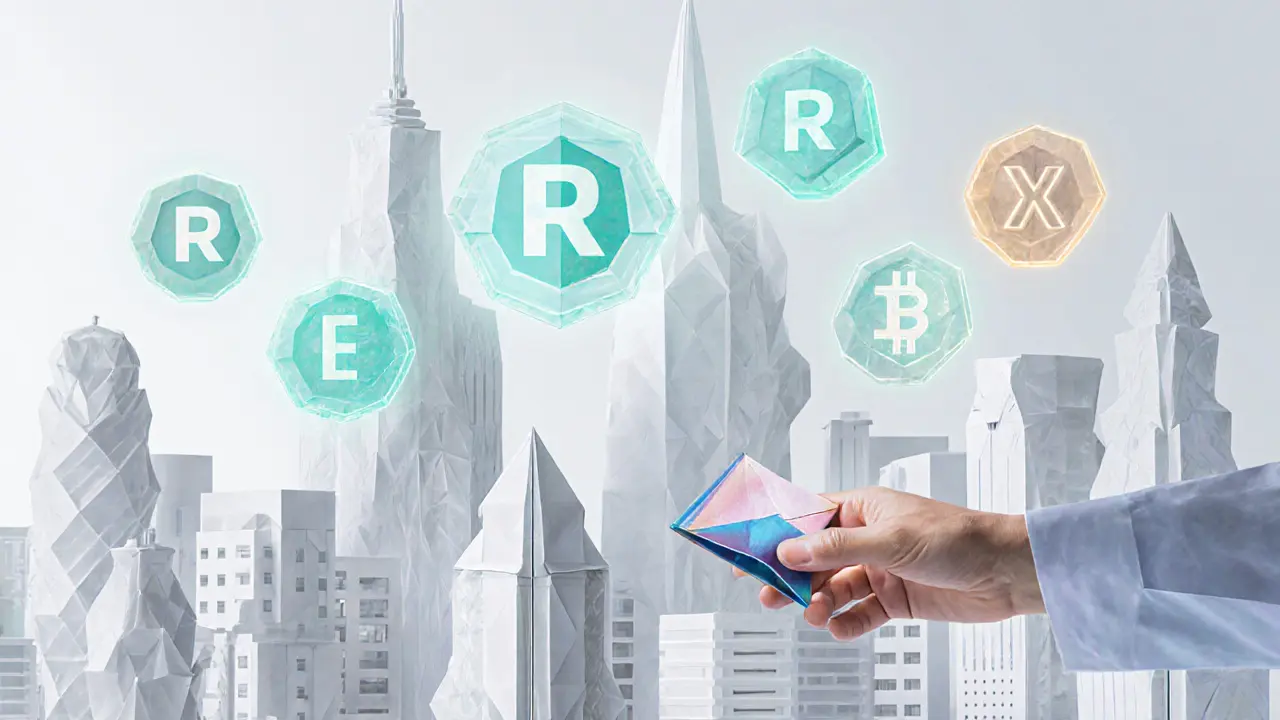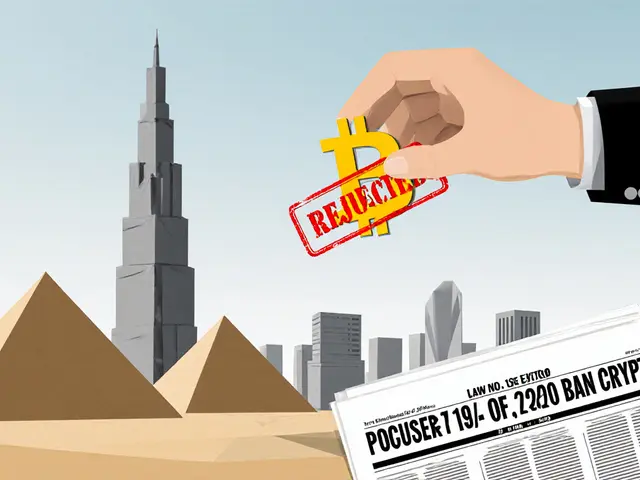REM Token Investment Calculator
Estimated Investment Returns
Total Investment: $100.00
Rental Income: $10.00
Staking Earnings: $12.00
Total Returns: $22.00
Net Profit: $12.00
ROI: 22.00%
TL;DR
- REM is a crypto coin on the Base blockchain that tokenizes real‑world property.
- Fractional ownership is handled through REM‑X tokens, giving holders a share of rental income.
- Buy REM on MEXC Global or compatible Base‑network DEXes using a Web3 wallet.
- Earn passive yields from rentals and DeFi staking, but expect high price volatility.
- Risks include limited exchange listings, liquidity constraints, and regulatory uncertainty.
When you hear the term Real Estate Metaverse (REM) is a blockchain‑based crypto coin that tokenizes real‑world property and lets anyone trade fractional ownership on the Base network, the idea of buying a piece of a skyscraper with a few bucks might start to feel real. REM crypto coin aims to blend property investment with the instant liquidity of cryptocurrencies, using AR visualisation and AI‑driven analytics to make the process feel like a true metaverse experience.
What Is the Real Estate Metaverse (REM) Token?
The REM token launched on December132024 and lives on the Base blockchain, a layer‑2 solution that offers cheaper gas than Ethereum. With a total supply of 1billion tokens, only about 4.2% circulates today (roughly 42million). Each token is a utility‑type asset that gives you access to the platform’s ecosystem: property listings, rental‑income streams, and DeFi staking pools.
Beyond the plain REM token, the platform issues REM‑X tokens. These represent fractional ownership of specific real‑estate assets. When a property is tokenized, the corresponding REM‑X tokens are minted and distributed to investors proportional to the amount of REM they lock in the platform’s smart contract.
How Does the Token Economy Work?
1. Buy REM on a supported exchange - currently MEXC Global handles about 20% of the daily volume. 2. Transfer REM to a compatible Web3 wallet (MetaMask, Coinbase Wallet, etc.) that supports the Base network. 3. Use the platform’s dashboard to lock REM in a property‑funding smart contract. In return you receive the appropriate amount of REM‑X tokens for that property. 4. Rental income is collected from tenants, converted into stable‑coin, and distributed monthly to REM‑X holders. 5. Optional: Stake your REM‑X or plain REM in the platform’s DeFi pool to earn an extra 8‑15% annual yield, depending on the property portfolio.
The tokenomics are deliberately simple: there is no inflationary minting after launch, and the only supply change comes from token burns that occur when users redeem REM‑X for cash equivalents. This design keeps the circulating supply relatively stable while encouraging long‑term holding.
Getting Started: Buying, Storing, and Using REM
To dip your toes in, you’ll need three things: a Base‑compatible wallet, a small amount of ETH (or Base’s native token, Base Ether) for gas fees, and an account on MEXC Global or a decentralized exchange like Uniswapv3 that supports Base.
- Sign up on MEXC Global, complete KYC if required, and deposit USDC or ETH.
- Search for the REM trading pair (REM/USDC) and place a market or limit order.
- Send the purchased REM to your MetaMask wallet - remember to add the Base network details manually.
- Visit the official Real Estate Metaverse dashboard, connect your wallet, and follow the on‑screen guide to lock REM and claim REM‑X.
The learning curve is usually two to three weeks for a newcomer, mainly because you have to understand fractional ownership, staking mechanics, and how rental income is calculated.

Benefits and Real‑World Use Cases
- Fractional ownership: With as little as $10 you can own a slice of a commercial office building in Dubai or a residential condo in NewYork.
- Passive rental income: Monthly payouts are proportional to your REM‑X share, typically ranging from 8% to 15% APR.
- Immediate liquidity: Unlike traditional REITs, you can sell REM or REM‑X on crypto exchanges at any time.
- DeFi integration: Staking pools let you earn additional yields on top of rental income.
- AR & AI tools: The platform’s augmented reality (AR) viewer lets you walk through a property virtually, while AI algorithms predict rental demand and price trends.
Risks, Challenges, and What Critics Say
Price volatility is the elephant in the room - REM fell from an all‑time high of $0.28 in April2025 to under $0.003 today, a 99% drop. Such swings make short‑term speculation risky.
Liquidity is another concern. With only MEXC Global listing the token and a daily trading volume of about $21k, large orders can slip the price or fail to fill. The limited exchange footprint also means you’re exposed to platform‑specific downtime or regulatory actions.
Regulatory uncertainty looms over any crypto‑based property ownership model. Some jurisdictions still debate whether tokenized real‑estate counts as a security, which could affect future listings or tax treatment.
Finally, the technical complexity of handling REM‑X tokens, tracking rental payouts, and managing gas fees can be daunting for users without a crypto background.
REM vs. Other Tokenized Real‑Estate Platforms
| Feature | REM | RealT | Propy |
|---|---|---|---|
| Blockchain | Base (Layer‑2) | Ethereum | Ethereum + Polygon |
| Fractional Token | REM‑X | RealT‑X | PropToken |
| Primary Exchange | MEXC Global (single) | Uniswap, Binance | Coinbase, Kraken |
| Rental Yield Range | 8‑15% APR | 5‑10% APR | 4‑9% APR |
| AR/AI Integration | Yes (built‑in viewer) | No | Limited |
| Market Cap (Oct2025) | $1.5M (est.) | $50M+ | $120M+ |
In a nutshell, REM offers the most cutting‑edge AR/AI experience but lags behind in market depth and exchange coverage. If you value a sleek metaverse feel and are comfortable with higher risk, REM could be a good fit. For steadier, more liquid exposure, RealT or Propy might serve you better.
Future Outlook and Roadmap
Industry analysts predict tokenized real‑estate could handle 1‑5% of global transactions by 2030. REM’s roadmap lists three major milestones for 2026: (1) partnership with unnamed developers to token‑launch 20new properties, (2) expansion to two additional cryptocurrency exchanges (expecting listings on Binance and KuCoin), and (3) rollout of a mobile AR app that lets users view properties with their phone camera.
Success will hinge on three things: sustained rental income, broader exchange listings to improve liquidity, and clear regulatory positioning. Keep an eye on the platform’s monthly rental‑distribution reports - consistent payouts are the most tangible proof that the model works.
Quick Checklist Before You Dive In
- Set up a Base‑compatible Web3 wallet (MetaMask recommended).
- Have $1‑$5 in Base gas fees ready for each transaction.
- Start with a modest amount ($10‑$50) to learn the staking and REM‑X claiming process.
- Track rental‑income statements on the dashboard each month.
- Monitor exchange listings - a new listing can dramatically improve liquidity.

Frequently Asked Questions
What does owning REM‑X actually give me?
REM‑X is a fractional token tied to a specific property. Holding it entitles you to a proportionate share of the rental income that property generates, and you can trade the token on supported exchanges just like any other crypto asset.
How risky is the REM token compared to other crypto assets?
REM is more volatile than traditional real‑estate investments because its price is set by crypto markets. Its limited exchange presence adds liquidity risk, but the underlying rental‑income stream can cushion downturns if the platform continues to distribute payouts.
Can I sell my REM‑X tokens for fiat directly?
Not directly on the platform. You first need to swap REM‑X for REM on the internal market, then move REM to a public exchange (like MEXC) and convert it to a stable‑coin or fiat through that exchange.
Do I need to pay taxes on rental income from REM‑X?
Tax treatment varies by jurisdiction. In many countries, crypto‑based rental payouts are treated as ordinary income, so you’ll likely owe taxes on the USD value you receive each month. Consult a local tax professional.
What’s the difference between REM and the Base token?
Base (often called Base Ether) is the native currency used to pay transaction fees on the Base blockchain. REM is the utility token issued by the Real Estate Metaverse platform; you need Base only to move REM around.





Andrew McDonald
It appears the REM token is being marketed to investors with the same naive optimism that characterized the dot‑com bubble, and one must question the underlying utility beyond speculative hype. The concept of a real‑estate metaverse is alluring yet remains largely unproven, and the token's whitepaper offers little substantive evidence of sustainable revenue streams. One could argue that the projected rental yields are overly optimistic, bordering on wishful thinking. Moreover, the tokenomics lack transparency, which is a red flag for any discerning portfolio manager. In short, the project feels like a glossy veneer over an opaque financial construct. :)
Enya Van der most
Hey, don’t let the gloom get you down! Every new frontier starts with a spark of imagination, and the REM token could be that catalyst for a next‑gen digital property market. Think of the possibilities: fractional ownership, global accessibility, and the chance to be part of a pioneering community. Let’s keep the conversation upbeat and explore how the platform might evolve with real‑world partnerships and innovative DeFi integrations. You’ve got this! 💪
Eugene Myazin
I’m pretty excited about the idea of blending real estate with the metaverse, especially if it opens doors for folks who can’t afford traditional property. It could democratize investment and bring a fresh cultural vibe to the digital world. Plus, the casual vibe of the platform seems welcoming, which might attract a diverse community of creators and investors alike.
karyn brown
Honestly, the hype train looks like it’s running off the rails 🚂💥. The token’s promised yields feel more like a fantasy novel than a realistic financial model. And those “guaranteed returns” are a classic bait‑and‑switch tactic. If you’re not careful, you’ll end up with a digital pocket‑full of air. 😅
Nilesh Parghi
When pondering the metaphysical implications of virtual property, one wonders whether ownership in a simulated realm transcends the mere exchange of tokens. Perhaps the true value lies not in the square footage but in the shared experience it enables. Consider the community bonds forged across continents through a common digital address.
Henry Mitchell IV
Interesting perspective, but let’s stay grounded. While philosophy is fun, investors need concrete data, not just poetic musings. :)
Kamva Ndamase
Hey there! I totally get the need for solid numbers, but let’s not forget the excitement of being early adopters. This could be a game‑changer, and the community vibe is already buzzing! Let’s keep the momentum and push for more transparency together! 💥🔥
bhavin thakkar
Allow me to clarify: the REM token’s architecture is fundamentally sound, leveraging smart contracts to ensure immutable lease agreements. The integration of staking mechanisms adds a layer of yield generation that’s rarely seen in traditional real‑estate platforms. In short, the project is technically robust and poised for growth.
Thiago Rafael
While your enthusiasm is noted, one must be wary of overly optimistic projections. Historical data suggests that many tokenized real‑estate ventures have struggled with liquidity and regulatory hurdles. It would be prudent to assess the legal framework surrounding virtual property rights before committing significant capital.
Janelle Hansford
Let’s not forget the human element; community engagement can drive adoption faster than any technical spec sheet. Providing educational resources and transparent reporting will build trust and attract a broader audience.
dennis shiner
Sure, community is important, but if the numbers don’t add up, it’s just hype. 🙄
Maggie Ruland
Yeah, right. Another token promising the moon while the moon is still a meme.
Joyce Welu Johnson
I understand why some people feel skeptical about the REM token, and I appreciate the concerns that have been raised about transparency and realistic returns. That said, I also see a genuine opportunity for innovation in how we think about property ownership and investment. The concept of fractionalizing real‑world assets and allowing people from any background to participate could democratize an industry that has traditionally been gated. If the developers can deliver on their roadmap, we might see new revenue streams from virtual rentals and experiences that complement physical properties. Moreover, the integration of DeFi staking could provide additional incentives for early adopters, potentially strengthening the token’s utility. It’s crucial, however, that the team continues to publish clear, audited data on occupancy rates, rental yields, and staking performance. Regular third‑party audits would go a long way toward building confidence among investors. Community governance is another factor-if token holders can influence key decisions, the project becomes more resilient and aligned with user interests. Education should also be a priority; many users may not fully understand how virtual real estate differs from traditional real estate, so clear guides and webinars would be valuable. In addition, partnerships with established real‑estate firms could lend credibility and provide a pipeline of actual properties to tokenize. All of these elements together could create a robust ecosystem that benefits both creators and investors. I remain hopeful that, with consistent effort and transparency, the REM token can evolve beyond a speculative asset into a functional platform that truly bridges the physical and digital worlds. Let’s keep the dialogue open and focus on constructive feedback that can help shape the future of this project.
Ally Woods
Sounds like a lot of work. Not sure it’s worth it.
Kristen Rws
Let’s stay positive and see where this goes!
Fionnbharr Davies
From a broader perspective, the integration of blockchain technology into real‑estate could mark a paradigm shift in how assets are managed and transferred. Philosophically, it challenges the notion of ownership being confined to physical space, inviting us to reconsider value in a digital context. It’s essential to weigh both the technical feasibility and the societal implications as we move forward.
Narender Kumar
Whilst your exposition is indeed erudite, one must acknowledge the inherent challenges associated with regulatory compliance across jurisdictions. It would be remiss to ignore the potential legal ramifications that could impede the seamless execution of such an ambitious venture.
Anurag Sinha
Are you seriously ignoring the fact that every big tech lie is a hidden agenda? The whole REM thing could be a front for data harvesting, and those “smart contracts” are just a veil. I’ve seen similar projects vanish overnight, taking investors’ money into the abyss. It’s safer to assume there’s a sinister plot at play, especially when the so‑called “transparency” is riddled with vague language. Keep your eyes open and your wallets closed.
Raj Dixit
Listen, this is a patriotic endeavor and we must protect our national interests. The REM token should align with our country's economic goals, not some globalist scheme. It’s obvious that outsiders want to undermine our sovereignty through crypto. We need strict oversight and a clear stance that prioritizes our people.